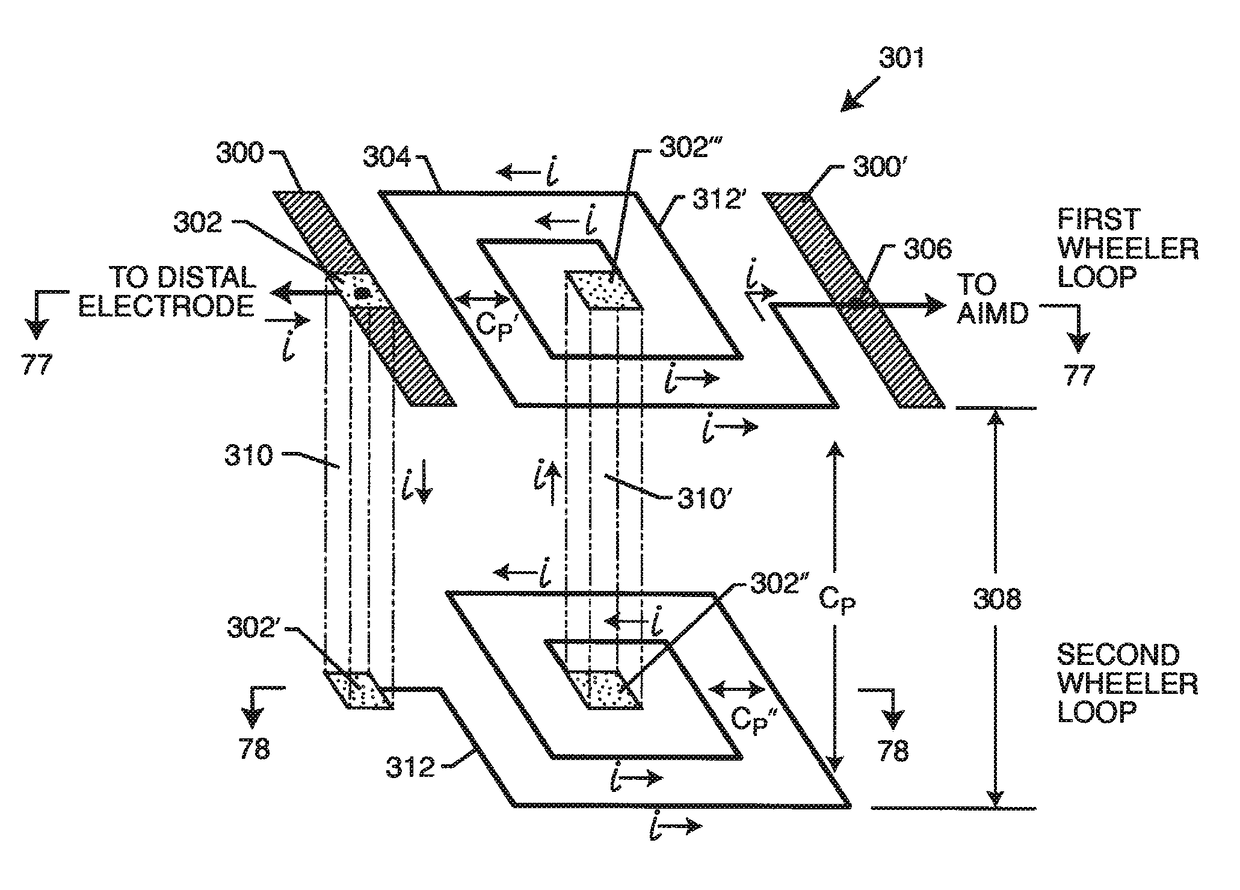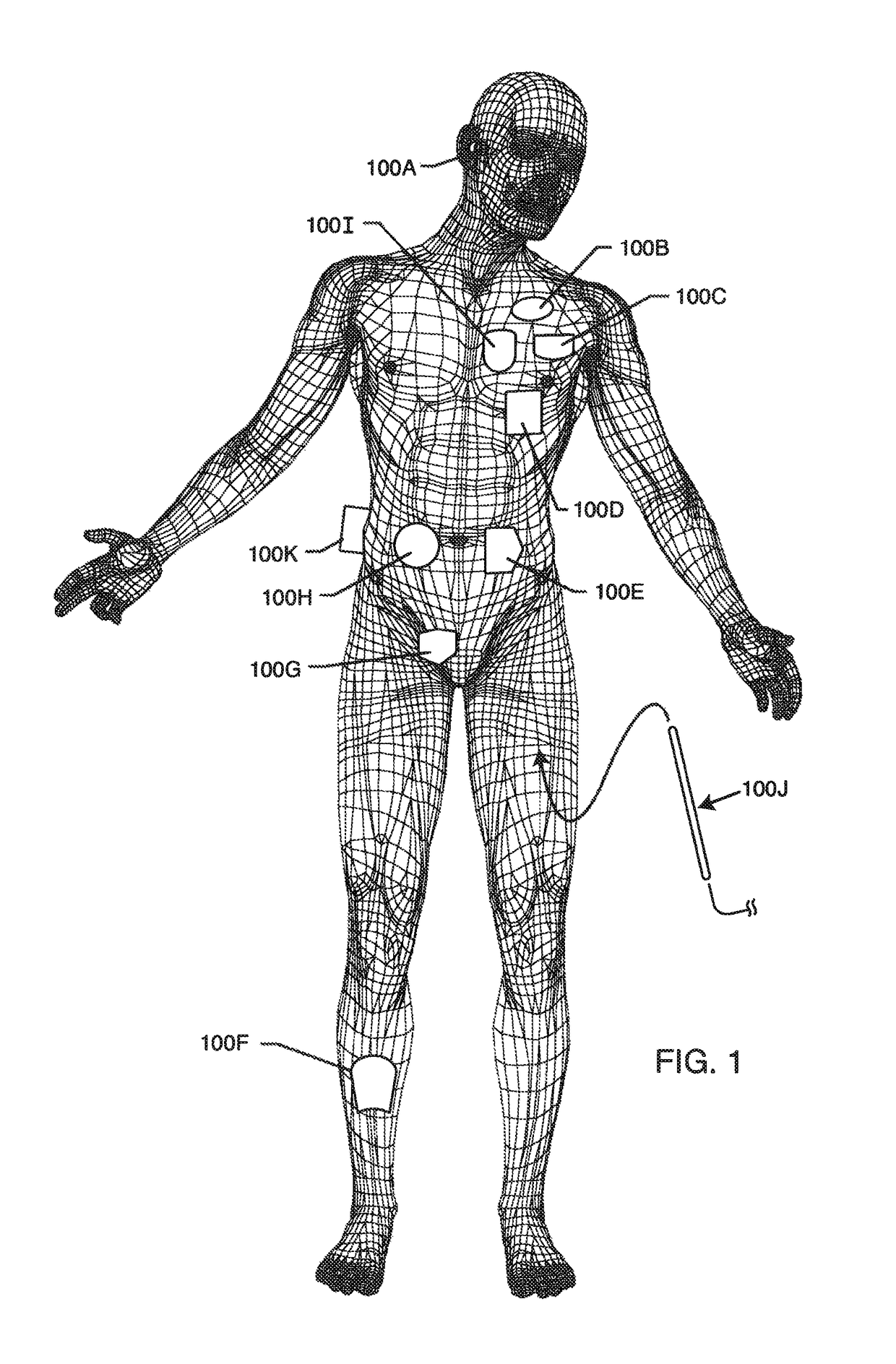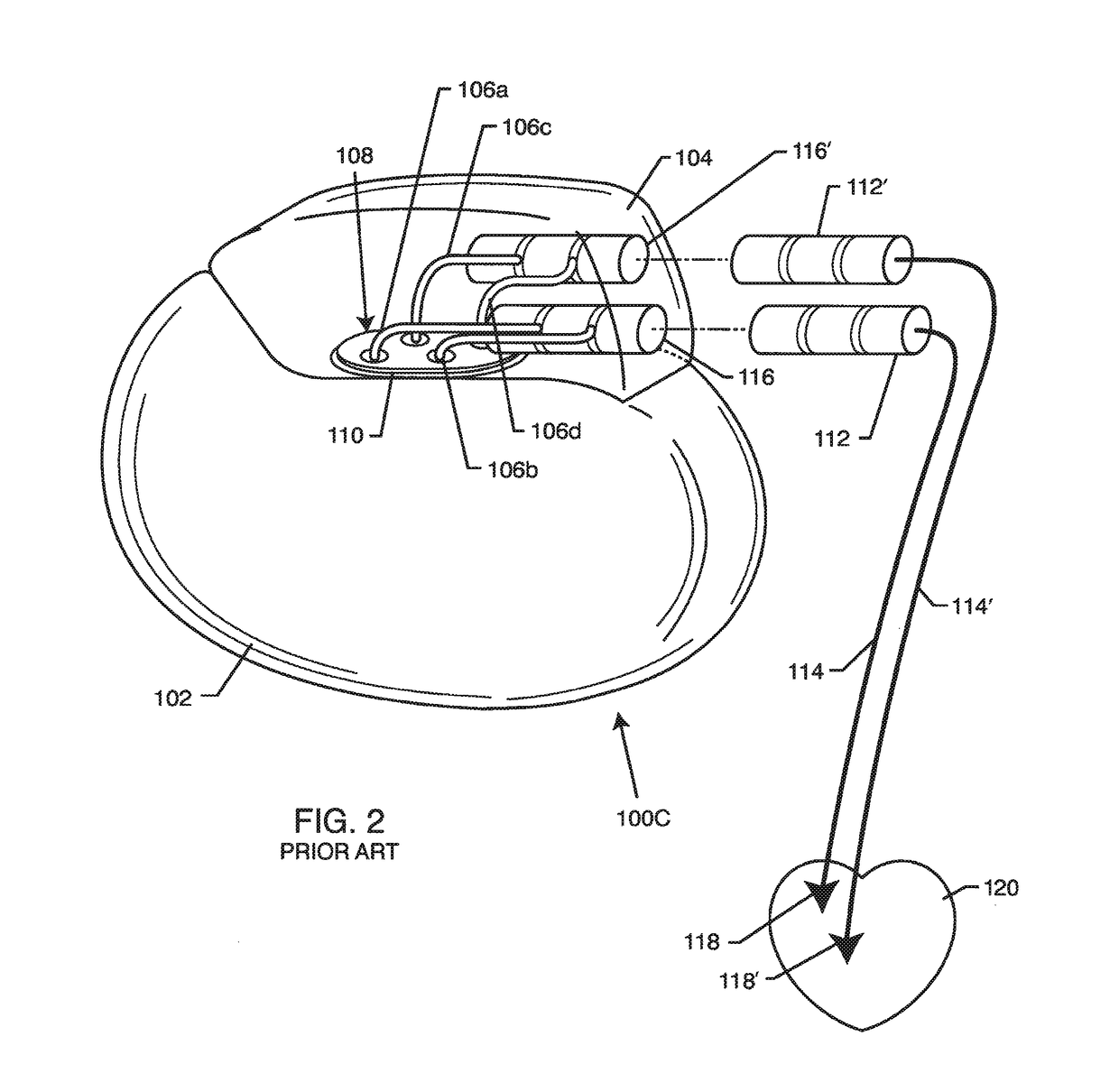Implantable lead having multi-planar spiral inductor filter
a multi-planar spiral, inductor filter technology, applied in the direction of internal electrodes, impedence networks, therapy, etc., can solve the problems of overheating of said lead or its associated electrode(s), multiple amputations, brain damage or multiple amputations,
- Summary
- Abstract
- Description
- Claims
- Application Information
AI Technical Summary
Benefits of technology
Problems solved by technology
Method used
Image
Examples
Embodiment Construction
[0172]As shown in the drawings for purposes of illustration, the present invention relates to multilayer helical wave filters placed between proximal and distal ends of an implantable lead of an active medical device (AMD). One or more multilayer helical wave filters may be implanted anywhere along the length of implanted leads or electrodes of AMDs. In particular, the multilayer helical, wave filter of the present invention presents a very high impedance (which impedes RF current flow) at one or more MRI RE pulsed frequencies. The present invention is particularly important to protect implanted leads from overheating in the presence of high power electromagnetic field environments, such as the RE pulsed fields produced by a clinical MRI scanner. In a broad sense, the present invention comprises a multilayer helical wave filter which is installed in one or more locations along the length of the conductors of an implanted lead. As will be shown, it is also very important that the mul...
PUM
| Property | Measurement | Unit |
|---|---|---|
| RF resonant frequency | aaaaa | aaaaa |
| RF resonant frequency | aaaaa | aaaaa |
| frequency | aaaaa | aaaaa |
Abstract
Description
Claims
Application Information
 Login to View More
Login to View More - R&D
- Intellectual Property
- Life Sciences
- Materials
- Tech Scout
- Unparalleled Data Quality
- Higher Quality Content
- 60% Fewer Hallucinations
Browse by: Latest US Patents, China's latest patents, Technical Efficacy Thesaurus, Application Domain, Technology Topic, Popular Technical Reports.
© 2025 PatSnap. All rights reserved.Legal|Privacy policy|Modern Slavery Act Transparency Statement|Sitemap|About US| Contact US: help@patsnap.com



